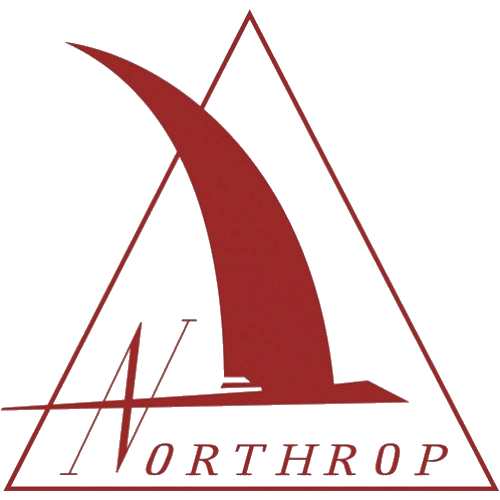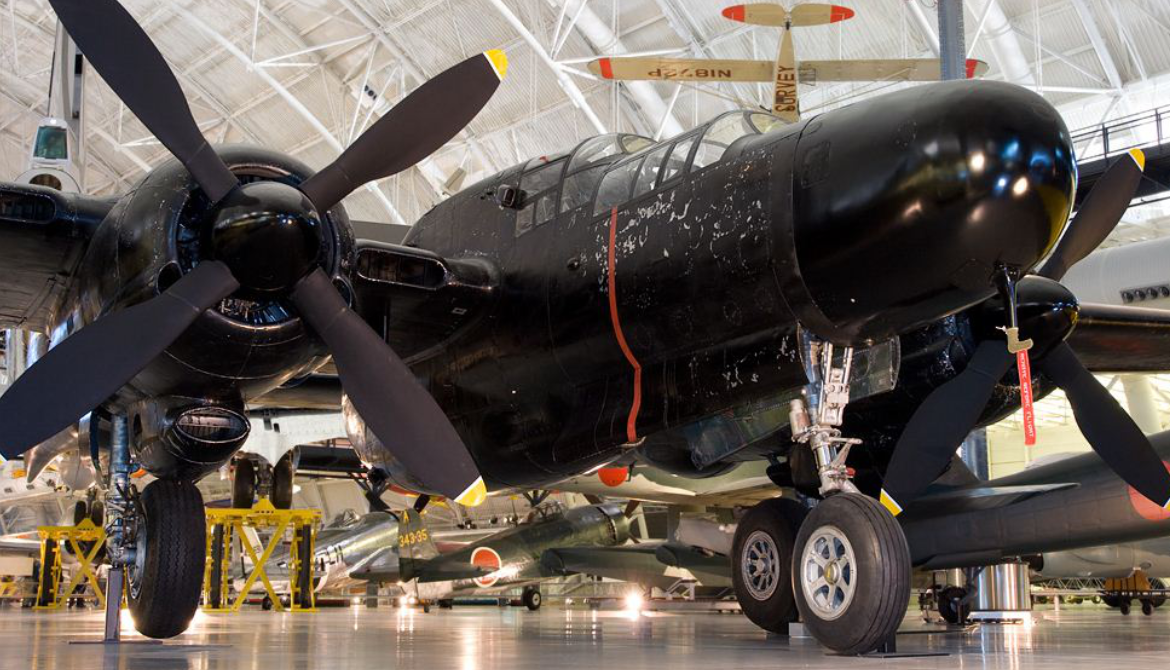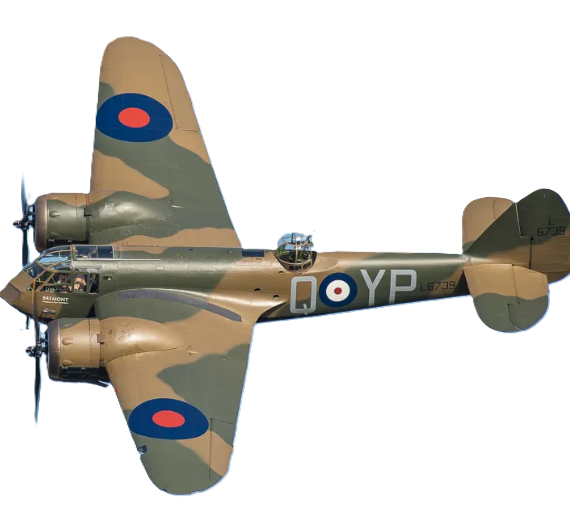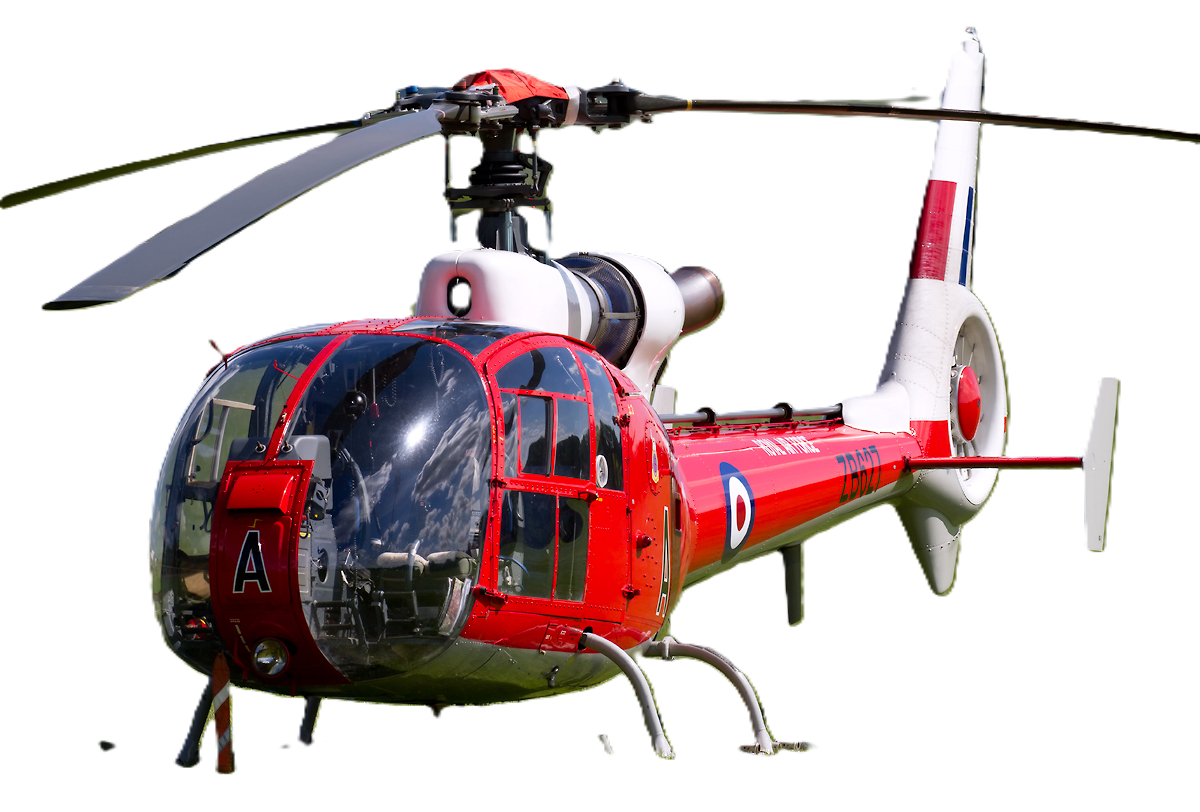Northrop Aerospace
P-61 Black Widow
 |
|
| A P-61A of 419th Night Fighter Squadron | |
| Role | Night fighter |
|---|---|
| National origin | United States |
| Manufacturer | Northrop |
| First flight | 26 May 1942 |
| Introduction | 1944 |
| Retired | 1954 |
| Primary users | United States Army Air Forces United States Air Force |
| Number built | 706 |
| Variants | Northrop F-15 Reporter |
.
History Northrop Aerospace P-61 Black Widow

The Northrop P-61 Black Widow is a twin-engine United States Army Air Forces fighter aircraft of World War II. It was the first operational U.S. warplane designed as a night fighter. Named for the North American spider Latrodectus mactans, it was an all-metal, twin-engine, twin-boom design armed with four forward-firing 20 mm (.79 in) Hispano M2 autocannon in the lower fuselage, and four .50 in (12.7 mm) M2 Browning machine guns in a dorsal gun turret. Developed during the war, the first test flight was made on 26 May 1942, with the first production aircraft rolling off the assembly line in October 1943.
On the night of 14 August 1945, a P-61B of the 548th Night Fighter Squadron named Lady in the Dark was unofficially credited with the last Allied air victory before VJ Day. The P-61 was also modified to create the F-15 Reporter photo-reconnaissance aircraft for the United States Army Air Forces and subsequently the United States Air Force
Early stages
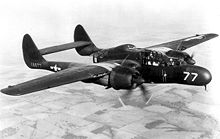
Following the USAAC acceptance, Northrop began comprehensive design work on what would become the first dedicated night fighter. The result was the largest pursuit-class aircraft flown by the U.S. during the war.
Jack Northrop's first proposal was a long fuselage gondola between two engine nacelles and tail booms. Engines were Pratt & Whitney R-2800-10 Double Wasp 18-cylinder radials, producing 2,000 hp (1,500 kW) each. The fuselage housed the three-man crew, the radar, and two four-gun turrets. The .50 in (12.7 mm) AN/M2 Browning machine guns were fitted with 36 in (910 mm) long, lightweight "aircraft" barrels with perforated sleeves. The turrets were located in the nose and rear of the fuselage. It stood on tricycle landing gear, and featured full-span retractable flaps, or "Zap flaps" (named after aircraft engineer Edward Zaparka), in the wings.
The aircraft was huge, as Northrop had anticipated. While far larger and heavier multi-engine bombers existed, its 45.5 ft (14 m) length, 66 ft (20 m) wingspan, and projected 22,600 lb (10,251 kg) full-load weight were unheard of for a fighter, making the P-61 difficult for many to accept as a feasible fighter aircraft0
KmCeiling
0
KmCombat RANGE
0
MachAircraft Speed
0
Max Crew
Photo Gallery
Northrop Aerospace
P-61 Black Widow


McDonnell Douglas aircraft
Northrop Aerospace
P-61 Black Widow
General Info
-
- Crew: 2–3 (pilot, radar operator, optional gunner)
- Length: 49 ft 7 in (15.11 m)
- Wingspan: 66 ft 0 in (20.12 m)
- Height: 14 ft 8 in (4.47 m)
- Wing area: (61.535 m2)
- Empty weight: (10,637 kg)
- Gross weight: (13,472 kg)
- Max takeoff weight: 36,200 lb (16,420 kg)
Powerplant
- Powerplant: 2 × Pratt & Whitney R-2800-65W Double Wasp 18-cylinder air-cooled radial piston engines, 2,250 hp (1,680 kW) each
- Propellers: 4-bladed Curtiss Electric constant-speed feathering propellers, 12 ft 2 in (3.72 m) diameter
Performance
- Maximum speed:589 km/h, at 6,100 m
- Range: 1,350 mi (2,170 km, 1,170 nmi)
- Ferry range: 1,900 mi (3,100 km, 1,700 nmi) with four external fuel tanks
- Service ceiling: (10,100 m)
Armament
- Guns: 4 × 20 mm (.79 in) Hispano AN/M2 cannon in ventral fuselage, 200 rounds per gun
- 4 × .50 in (12.7 mm) M2 Browning machine guns in remotely operated, full-traverse upper turret, 560 rpg
- Bombs: for ground attack, four bombs of up to 1,600 lb (726 kg) each or six 5-in (127 mm) HVAR unguided rockets could be carried under the wings. Some aircraft could also carry one 1,000 lb (454 kg) bomb under the fuselage.
.
Links to Youtube & Others
Following the USAAC acceptance, Northrop began comprehensive design work on what would become the first dedicated night fighter.[citation needed] The result was the largest pursuit-class aircraft flown by the U.S. during the war.
Northrop
P-61 Black Widow
The P-61 featured a crew of three: pilot, gunner, and radar operator. It was armed with four 20 mm (.79 in) Hispano M2 forward-firing cannon mounted in the lower fuselage, and four .50 in.
Youtube Link
The main fuselage, or gondola, was centered on the aircraft's centerline. It was, from the tip of the nose to the end of the Plexiglas tail-cone, approximately five-sixths the length of one wing (root to tip).
